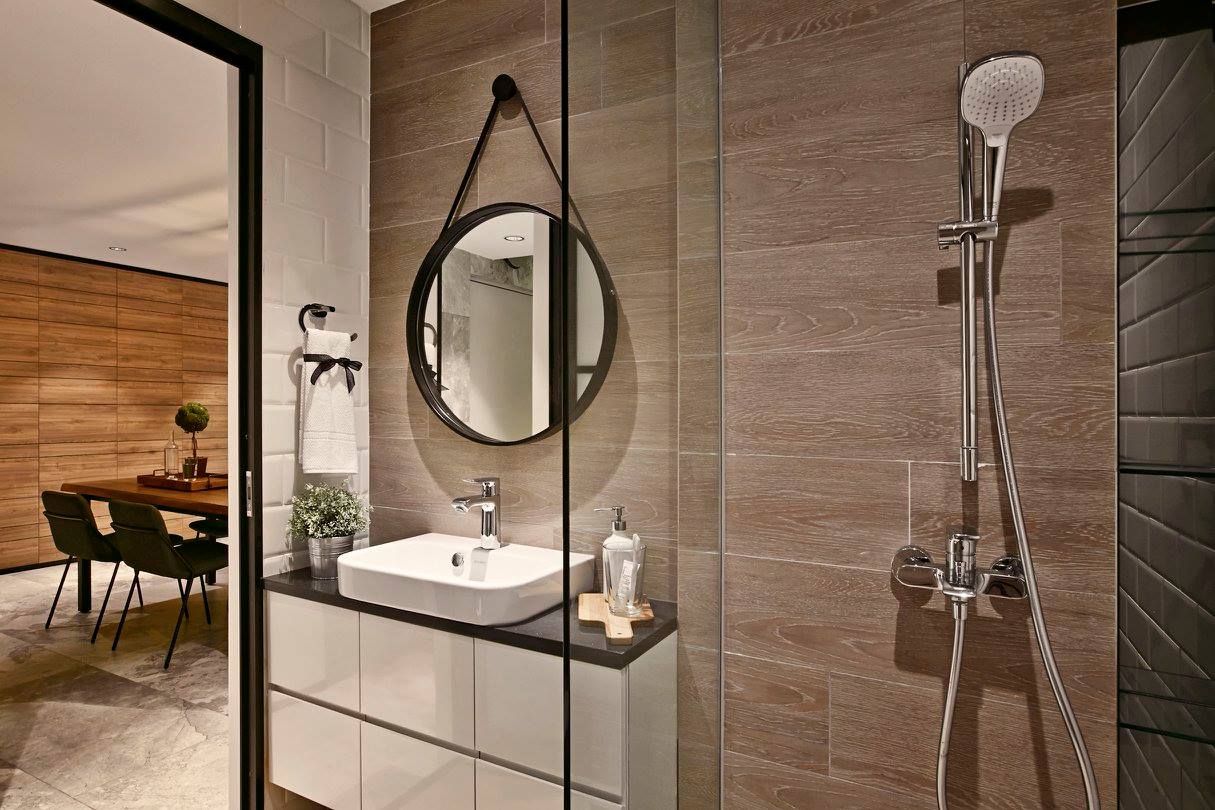How to design an ergonomic bathroom

When it comes to designing your bathroom, think beyond how it looks.
Bathrooms are often high-use spaces that are on the smaller side, so it's important that you also consider ergonomics when planning out your bathroom.
That means no more head/knee/elbow bumping, difficult cleaning or awkward manoeuvring when navigating around the space.
We have 12 tips to building an ergonomic bathroom:
1. For shelves mounted above the sink, you want to make sure you are installing them at a height that you don't bump your head when you lean in to wash your face.
Alternatively, consider a built-in recessed shelf/ledge that won't get in the way.

2. Laminates aren't the best material for your bathroom vanity cabinet since they can get damaged when they come in contact with water. But if you must use them, make sure your cabinet area is kept mostly dry.
Also use a divider for your shower to safeguard against splash and to contain the hot steam within the shower area. This helps to prevent your vanity area from being exposed to too much moisture.

3. There should be sufficient distance (minimum one head length) between the rim of your bathroom sink and the end of the tap of your spout for washing your hands and face.
But if you use the sink for things like washing delicates, you might want to accommodate more than one head length of space.

4. When buying and installing your tap, make sure the flow of the water is closely aligned with the drainage hole to avoid too much splashing when using the sink.

5. When hanging up your vanity mirror, make sure it is at eye-level for most of the users in the bathroom.
6. Your bathroom vanity should have a height of around 85 to 90cm from vanity top to the floor so you don't have to bend forward too much when using your vanity area.
If you have a vessel sink, take reference from the rim of the sink instead.

7. Choose non-glossy, and preferably slightly textured, floor tiles for your bathroom to prevent slip.
You also don't want to go for tiles that are too large (e.g. 60x60cm and above), since it will mean lesser grout lines and therefore less traction, making it more slippery.
But you don't want to go too small either, since it will mean you will have to scrub down more grout lines.
8. Make cleaning up a breeze in your bathroom by going with a 'floating' vanity cabinet and a 'floating' toilet.

9. Where you place your towel rails also matter.
You'll want to reach for your towels easily after a shower without making too much of a splash on the floors, but you also want to locate them at a well-ventilated spot where they can be dried off to prevent your towels from smelling musty.

10. For more comfortable seating at the toilet throne, you want at least a 40cm distance between the centre of your toilet to the next obstacle e.g. wall, glass divider or vanity cabinet.
11. The best position for your toilet paper holder is in front of you, at a distance of around 20 to 30cm from the rim of your toilet seat and at a height of around 60 to 70cm from the floor.

12. When it comes to bathroom lighting, go with a general ambient light (usually an overhead fixture) that will light up all areas of your bathroom evenly and then add a task light for your vanity area.
Vanity lights should be placed by the side of your mirror at a height that is eye level to avoid casting shadows on your face.

This article was first published in Renonation.